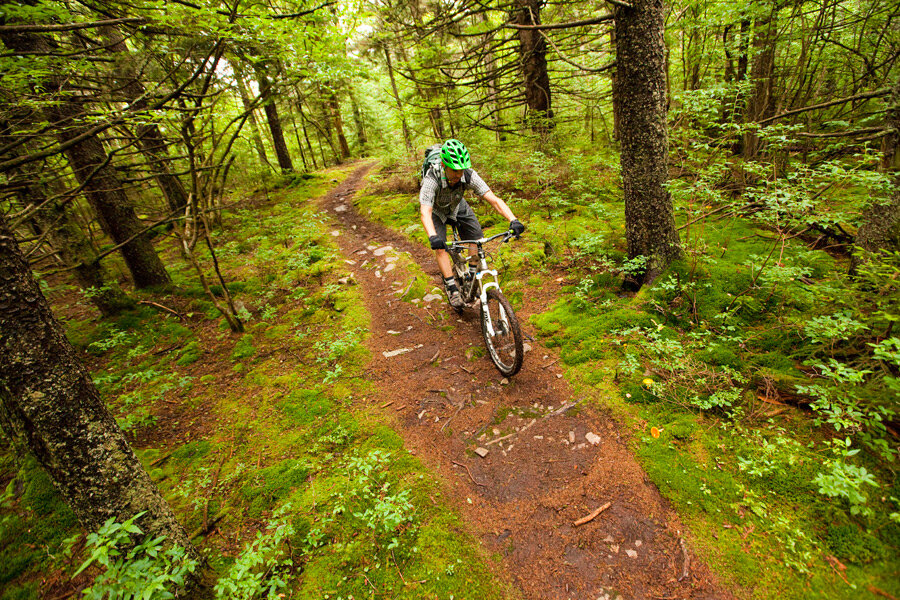How Will the Great American Outdoors Act Actually Work?
Spruce Knob, West Virginia. Photo credit: Leslie Kehmeier.
This summer, after years of outreach from the outdoor community and many others, the Great American Outdoors Act was signed into law. The bill provides permanent funding for the Land and Water Conservation Fund (LWCF) at $900 million each year. It also provides up to $1.9 billion a year for up to five years for deferred maintenance projects on National Parks, National Forests, BLM, Fish and Wildlife, and for the Bureau of Indian Affairs. This portion of the bill was originally introduced as the Restore Our Parks Act, and in the final bill is called the National Parks and Public Land Legacy Restoration Fund. After decades of petitioning for LWCF to exist and for the program to be fully funded (it’s only happened twice since its inception!), and for Congress to properly fund parks and public lands and address the maintenance backlog, it feels like a shock to the system to have a permanently reauthorized program with permanent full funding and funding for maintenance.
Going forward, instead of spending our time pleading with Congress to fund LWCF or the maintenance backlog on public lands, we can now think about how the money moves out of DC and into communities across the country, what projects get priority, and how we advocate for new trails, parks, or public lands close to us. And after years of Congressional inaction, there are thousands of shovel-ready projects just waiting for funding across the country.
Many Outdoor Alliance member groups work with local stewardship groups to maintain and restore recreation resources across the country. They are ready to use funding from the Great American Outdoors Act to put people to work restoring some of our favorite outdoor places. Outdoor Alliance is working on putting together materials to explain how the current LWCF funding process works, including where the money goes, how you can advocate for your local trail, crag, or put-in, and how your local stewardship group can use this funding to improve your favorite outdoor places.
For now, we thought it would be helpful to offer a quick rundown of the different funding mechanisms at work in the Great American Outdoors Act:
More about how the National Parks and Public Land Legacy Restoration Fund Works
The National Parks and Public Land Legacy Restoration Fund is the maintenance backlog part of the Great American Outdoors Act. It will provide funding to address the maintenance backlog on National Parks and other public lands. The fund for maintenance will receive 50% of unallocated energy revenue up to $1.9 billion a year. This $1.9 billion a year will be divided between different agencies, with:
70% going to National Parks
15% going to National Forests
5% to Fish and Wildlife
5% to the Bureau of Indian Affairs
5% to the Bureau of Land Management
The fund will be active for five years. Many of these agencies already have lists of projects that they’ve prioritized and are ready to act on. Now they are just waiting for Congress to appropriate the funding (since the current continuing resolution does not include new programs).
More About How the Land and Water Conservation Fund Works
LWCF funds are primarily used for purchasing parcels of land, but also for recreation infrastructure, which could include trails, parking, or access points for public lands. Over the life of the program, LWCF has funded critical protections for river corridors in places like West Virginia’s Gauley and New Rivers and helped establish public river access points for canoers, kayakers, and rafters in places like Washington’s White Salmon River. LWCF has made possible thousands of miles of singletrack for mountain bikers and hikers, including at areas like the world-class trail system at Lory State Park near Fort Collins, Colorado, and Toro Park, California, home to challenging trails and spectacular views of Monterey Bay.
The fund has two parts: federal and stateside. On the federal side, staff from agencies like the Forest Service will send project ideas to their bosses at the agency’s DC headquarters every year. Local groups can get involved and influence these requests, and help to build support for projects. On the state side, each state must prepare a Statewide Comprehensive Outdoor Recreation Plan (SCORP) every five years to remain qualified for stateside LWCF. These plans set priorities for how each state spends LWCF dollars. In general, federal LWCF dollars go toward funding land purchases (for example, purchasing “checkerboard” land where parcels of private land are surrounded by public land) while state LWCF dollars are used for creating parks and developing and improving recreational infrastructure. Stateside LWCF dollars are also used to purchase conservation easements and acquire new public lands, protect wildlife habitat, and protect lands that provide clean drinking water for cities in the Northeast.
Why Do These Funds Use Energy Revenue?
A question we often get about LWCF is whether or not the fund encourages energy development because the program is funded by revenue from offshore oil and gas royalties.
The revenue from offshore oil and gas royalties exists regardless of LWCF – in years when LWCF was not fully funded (that is, most of them), that revenue has been siphoned off by Congress, rather than being used for conservation.
As we work toward climate solutions, including making public lands carbon neutral, we hope that one day fossil fuel extraction on public lands and waters is a relic of the past. When that day comes, we look forward to finding a new source of funding for recreation and conservation projects. In the meantime, as long as we continue to use public lands and waters for resource extraction, using that revenue to reinvest in conservation and recreation projects makes sense.

